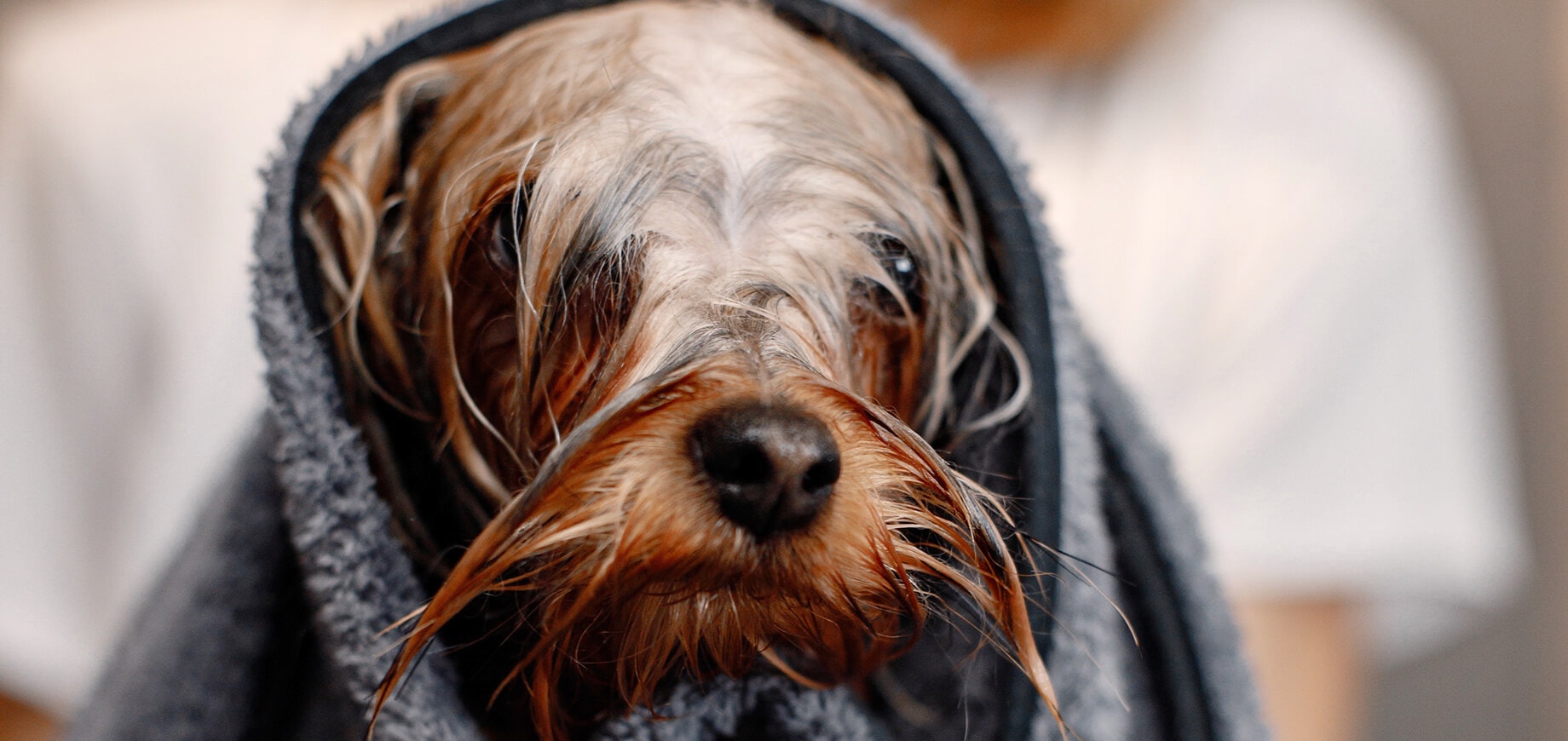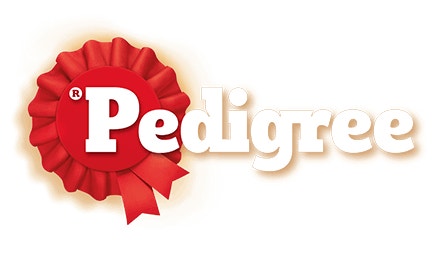

Is there anything cuter than the sight of a puppy in the bath? Imagine a puppy with dripping wet fur and a beard of shampoo, and then wrapped snugly in a towel afterwards (see below) - you’ll find that the answer is likely no! Puppies should be bathed every now and then to keep their coat clean from dirt, dust and debris. It also protects their skin by removing dead skin cells and dander, which can otherwise cause skin irritation.
In this article, we help dog owners understand how often to bathe their puppy, depending on their age, breed, coat and lifestyle. We look at the signs your puppy needs a wash, how bathing needs differ between dogs, and common mistakes owners can avoid when bathing their puppy. We also provide a step-by-step guide on how to bathe your puppy! With our guidance, dog owners can learn everything they need to know about their puppy’s first bath, and can implement a routine that suits their dog’s needs and supports their overall health, hygiene and happiness.
How often you should bathe your puppy depends on their age, breed, coat and lifestyle. Generally speaking, it is recommended to only bathe your puppy not more than once a month. However, some dog owners may need to rinse their puppy’s coat once a week if they have a particularly active lifestyle and spend a lot of time outdoors. If your dog’s coat is dirty from playing in the mud at any time, they’ll need a quick rinse and towel dry.
However, overbathing your puppy can affect the quality of their coat too, which we discuss in more detail later. You should only bathe your puppy as often as they really need and no more than necessary. If you want to keep your puppy clean in between baths, you can regularly brush their coat or wipe them down with a wet towel.
No one can resist cuddling with their puppy, so the best way to know if your puppy needs a bath is if they are no longer huggable. If you notice an unpleasant odour, can see dirt or grime, or if their coat is greasy, sticky or matted, it’s probably time for a bath. Of course, if your puppy enjoys messy play and has rolled around in something smelly, they will absolutely need a bath!
The best age to start bathing your puppy is once they are at least 8-weeks-old. This is because younger puppies aren’t able to regulate their body temperature as well as older dogs, and bathing them can make them too cold which can lead to hypothermia.
If your puppy is younger than 8-weeks-old and still with their mother, she will keep them clean by licking their coat to remove any dirt or waste. If they’re not with their mother, you can keep your puppy clean by using a warm, wet cloth to wipe them down.
While we can advise on how often to bathe a puppy, it will largely depend on your puppy’s specific needs. Dog owners should consider their dog’s breed, coat type and lifestyle when deciding when to give your dog or puppy a bath.
Firstly, it’s important to remember that puppies have natural oils in their coat to keep their fur silky and prevent it from becoming brittle. Overbathing your dog can strip away those oils and cause your puppy’s coat to become dull, as well as make their skin dry and itchy. Your puppy’s coat also provides insulation during cold weather and sheds naturally in hot weather - overbathing can affect these qualities.
Dogs with longer coats are more likely to get dirt in their fur, and if they’re not bathed regularly it can cause their long fur to become tangled or matted - leading to more work for dog owners. These puppies can be washed often - at least once a month, if not more - and regular grooming can help in between baths. On the other hand, short-coated puppies shouldn’t need bathing as often and once a month may be sufficient.
While you might think hairless dog breeds, such as American Hairless Terriers, Chinese Crested dogs and Argentine Pilas, need bathing less often, the opposite is actually true. Since their skin isn’t protected by fur, hairless dog breeds need weekly baths to keep their skin clean and reduce the likelihood of skin infections.
Another thing to consider when deciding how often to wash your puppy is what their lifestyle and activity levels are like. If your puppy spends a lot of time indoors, it’s unlikely they will need bathing that often - and regular grooming can remove any dust instead. Whereas, if your puppy spends a lot of time outdoors and loves splashing in mud, they will need a bath to clean their coat. In this case, under-bathing could lead to a buildup of dirt, oil and bacteria, and may cause skin irritation and infections. In either case, you should also be wary in case your dog is itching due to fleas - you can consult a vet on how to treat flea infestations.
Understanding the basics of bathing your puppy can help prepare you for your puppy’s first bath and set you up for success as you approach bathtime with confidence and patience.
Decide where you want to bathe your puppy, whether in the sink, bath or a tub outside if it’s summer. Just make sure it’s an appropriate size for your puppy, as well as a place that is suitable to get wet and easy for you to clean up.
Depending on your puppy’s coat, you’ll need a brush that is designed for their fur, whether it’s long, short or thick. Grooming your dog or puppy can help detangle any knots and brush out loose fur before their bath. Speaking of brushes, you can also use this time to brush your dog’s teeth - or for some nail care!
You’ll need to use a puppy shampoo that is specially formulated to be gentle on their fur and skin, and it’s best if the shampoo is unscented, as a lingering unfamiliar scent can bother your puppy. Make sure not to get any shampoo in their ears - there are other ways to clean your dog’s ears.
Have a towel ready to help dry off your puppy, which can reduce the amount of water they shake off after their bath. You’ll also likely need a towel for yourself, as bathing puppies can be a messy business!
To make bathtime a positive experience for your puppy, you should keep puppy treats on hand and offer them to reinforce good behaviour. Bonus points if you use Pedigree® Dental Chews for extra hygiene!
Although this isn’t necessary, some dog owners choose to use a hairdryer on their dog to speed up the drying process. Use a dog hairdryer with reduced noise levels on a warm/cool setting, and don’t hold it too close or for too long.
You can wash your 8-week-old puppy with puppy shampoo, which is specially formulated to be gentle and safe on their skin and fur, as well as hypoallergenic. You may also find tearless shampoos that can reduce the risk of irritation if it accidentally gets into your puppy’s eyes.
Yes, you should brush your puppy before bathing them to help remove loose fur, dirt and knots. Once your puppy’s fur is wet, knots can become more tangled and this can make bathtime more difficult, which is why it’s best to brush them beforehand.
You can dry your puppy after a bath by using a towel. You can wrap them in a towel to remove excess water, and then gently pat their coat rather than rubbing. You can also use a dog-safe hairdryer in a cool or warm air setting.
Bathing your puppy doesn’t need to be as difficult as it may sound! As long as you are well-prepared and follow our step-by-step guide, you can start bathing your puppy from 8-weeks-old. Make sure you understand your dog’s bathing needs according to their age, breed and lifestyle, and only bathe your puppy as often as they need, as overbathing or underbathing can damage their coat quality! If you’re looking to support your dog’s hygiene in other ways too, check out Pedigree® Dentastix. These dental chews can reduce tartar, clean their teeth and support their gums - a great way to improve your dog’s oral health.

